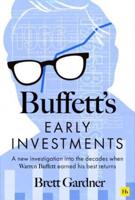Publisher's Synopsis
Detailed product information alongside relevant IFRS 9guidelines for more streamlined implementation
IFRS 9 - Understanding Financial Instruments and theirAccounting is a practical and informative guide to financialinstruments and accounting issues in the context of the new globalframework for financial reporting. The first handbook of its kind,this book provides detailed information about over eighty productsalongside IFRS 9 accounting, merging the knowledge base and skillsets of two distinct functions into a single useful reference.Practical implementation guidance covers both derivative andnon-derivative instruments, and real-world illustrations providedeeper insight into the everyday accounting entries and analysesthat IFRS 9 entails. Readers will gain both the backgroundknowledge and the application skills to help ease the adoption ofIFRS 9 with minimal disruption to daily operations.
With the exception of optional adoption of the hedge accountingrequirements, the International Accounting Standards Board mandatedcomplete IFRS 9 adoption no later than January, 2018. The newstandard replaces IAS 39, and consists of classification andmeasurement, impairment, and hedge accounting. Successfulimplementation requires an in-depth understanding of cash flows andthe mechanics of financial instruments. IFRS 9 -Understanding Financial Instruments and their Accountingsimplifies IFRS 9 principles and explains the implementationprocess, helping readers to:
- Understand the handling of derivative and non-derivativefinancial instruments
- Clarify IFRS disclosure requirements and suggested accountingentries
- Examine the correlation and divergence between IFRS 9 and IAS39 frameworks
- Understand the impact of transitioning from IAS 39 to IFRS9
- Develop an effective IFRS implementation strategy withunderstanding of the requirements and procedures
Existing coverage of IFRS 9 tends to be restrictive, with littleattention paid to product guidance, leaving a gap in the knowledgerequired for successful worldwide adoption. This book fills thatgap, providing a complete resource with full explanation andillustrative examples.










